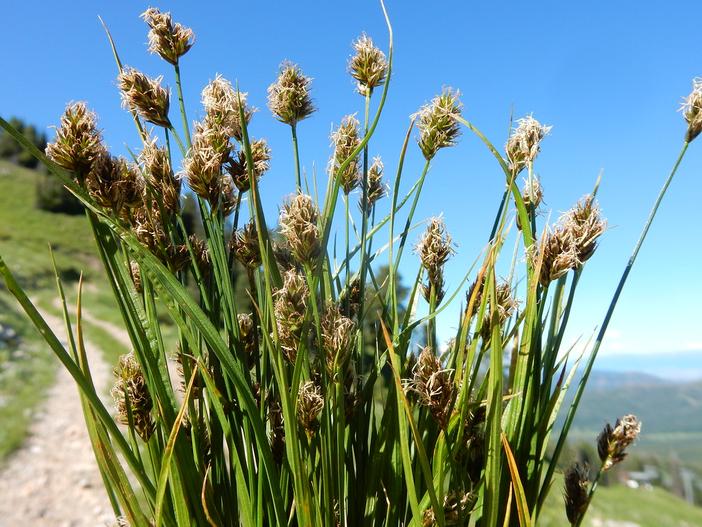Clustered Field Sedge
(Carex praegracilis)
Clustered Field Sedge (Carex praegracilis)
/
/

Matt Lavin
CC BY-SA 2.0























Estimated Native Range
Summary
Clustered Field Sedge is valued for its low maintenance requirements and its utility as a lawn substitute or for creating meadow-like plantings in specialty horticulture. It is also used for erosion control and wetland restoration due to its robust rhizome system. In cultivation, it thrives in full sun to part shade and is adaptable to various soil drainage conditions, from fast to slow. While it prefers medium amounts of water, it can tolerate drier conditions once established. This plant’s spreading range, particularly along roadsides, should be monitored to prevent unwanted encroachment into natural areas.CC BY-SA 4.0
Plant Description
- Plant Type: Grass
- Height: 2-3 feet
- Width: 2-3 feet
- Growth Rate: Moderate
- Flower Color: N/A
- Flowering Season: Spring
- Leaf Retention: Evergreen
Growth Requirements
- Sun: Full Sun, Part Shade
- Water: Medium, High
- Drainage: Fast, Medium, Slow
Common Uses
Bank Stabilization, Bird Garden, Butterfly Garden, Deer Resistant, Drought Tolerant, Erosion Control, Fire Resistant, Groundcover, Low Maintenance, Salt Tolerant, Street Planting
Natural Habitat
Native to wet meadows, riparian zones, and coastal scrublands across North America, including disturbed areas and alkaline conditions
Other Names
Common Names: Black Creeper Sedge, Expressway Sedge, Field Sedge, Freeway Sedge, Graceful Sedge, Silver Sedge, Slim Sedge, Very Slender Sedge, Carex Très Grêle
Scientific Names: , Carex praegracilis, Carex marcida, Carex camporum, Carex marcida var. debilis, Carex gayana var. hyalina, Carex latebrosa, Carex marcida var. alterna, Carex praegracilis var. praegracilis, Carex sartwellii var. occidentalis
GBIF Accepted Name: Carex praegracilis W.Boott